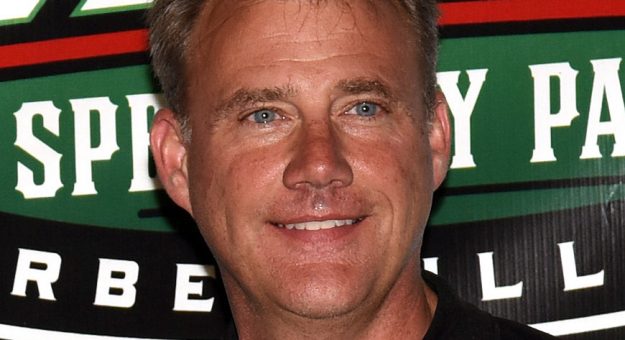World Racing Group and its entities — the World of Outlaws NOS Energy Drink Sprint Car Series, the World of Outlaws Morton Buildings Late Model Series, the Super DIRTcar Series and DIRTcar Racing — have experienced recent growth that can only be paralleled by “Jack and the Beanstalk.”
We chatted with World Racing Group Chief Executive Officer Brian Carter, who started behind the scenes with the company in the summer of 2004 before officially joining it in February 2005, about the progress throughout nearly two decades and how the company has thrived despite the COVID-19 pandemic that has plagued the entertainment industry.
Q: World Racing Group is arguably the hottest it has ever been. Take us through the process of purchasing the company, overcoming debt, dodging some of the potholes and finally reaping the rewards from the effort.
CARTER: It’s been an interesting journey. The early days of World Racing Group and the acquisitions are always challenging. On top of it you throw in a major financial crisis in 2008. It’s presented its challenges. In 2009 through ’12, we set the foundation for the growth we’re experiencing now. From 2010 to ’20, we were rebuilding the vision we wanted World Racing Group to be. We did that in a manner people didn’t understand, but it’s been rewarding to see. It’s nice to see the momentum continue even after the pandemic.
The industry is always going to have challenges. This year it’s the supply chain or pandemic. We have the infrastructure so we’re dealing with the challenges with a much stronger organization. Now, with the process in place and the strength of the brands and the strength of the events, it brings some confidence and the marketplace allows you to grow.
Q: The COVID-19 pandemic threw everyone for a loop. How were you able to navigate through a racing season that seemed to always be changing?
CARTER: It really tested the organization, our ability to react and navigate and be flexible as we approach things. The reason we were able to work through the pandemic were things we put in place years ago. We started developing our own ticketing database, selling tickets, promoting events ourselves. We began the establishment of the streaming with DIRTVision in 2004. We began the direct relationship with the fans. The pandemic highlighted some of the strengths of things we’ve been building along the way.
It did allow us to continue to meet the obligations of our sponsors and navigate how to go back racing. Because of the relationship we had with the ticket buyers, we could promote a show with as little as three weeks’ notice.
We felt our way through. That day in March when we shut everything down was tough. After May 8 it was how do we go back safely and responsibly and bring the fans back into the mix. Not only the financials the fans bring, the energy and excitement is all a part that was missing.
Not knowing when we were going racing was really, really hard. Clearly, we’re not in the essential businesses. But our broadcasts and media were essential. It was interesting how it was categorized in North Carolina. We were able to get back in the studio. Entertainment and mass gathering is part of our business. We could start bringing people in to allow us to socially distance and have enough financials to get everything started together. We started slowly increasing to not have any instances or cause the spread at the time.
Q: Two longtime World Racing Group executives (Tom Deery and Ben Geisler) left the company in 2020. What has the effect been on you as well as the company, and what is the timeline on filling those roles?
CARTER: There are holes that were left by those two C-officers leaving. I have an organization of executive directors and directors that are seasoned veterans of the sport and industry. The depth of talent through the industry is very stout. It’s allowed the organization to allow leaders to emerge. It’s been a wonderful experience to watch that side of the organization grow and that’s been remarkable from the previous five years. I’ve been very proud of the team and candidly I wouldn’t say my job has gotten easier, but I have an incredible team that is very deep.
We’ll look at an organizational structure that’s different. It’s been 18 months since Tom’s left and a year since Ben left. The traditional roles in organizations move around a lot. Will it be a C-officer? Will it be a VP? I’m looking at the organization five years from now. It’ll come with a position and a role and a personality and skillset that positions us best five years from now.
Click below to continue reading.
